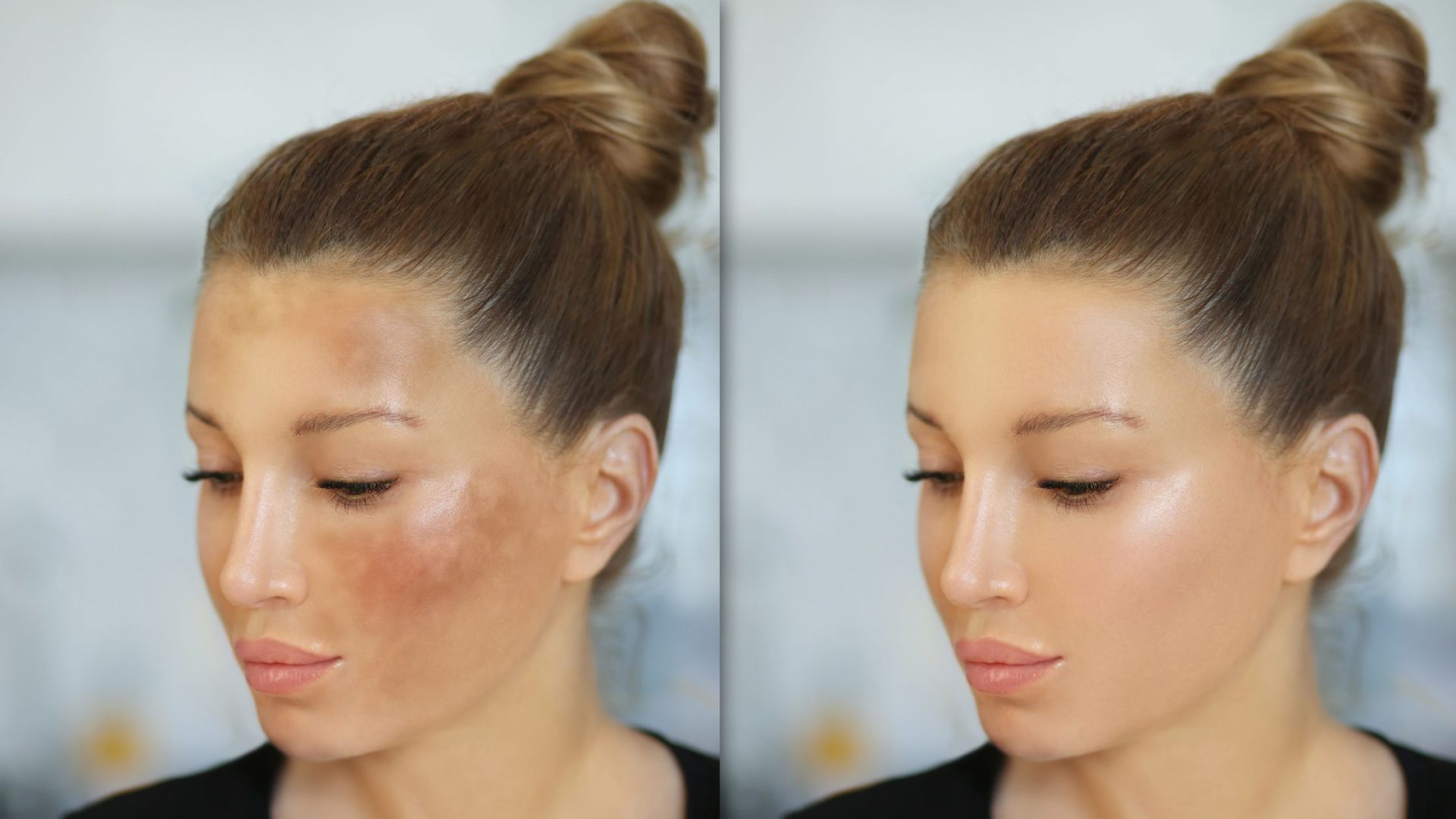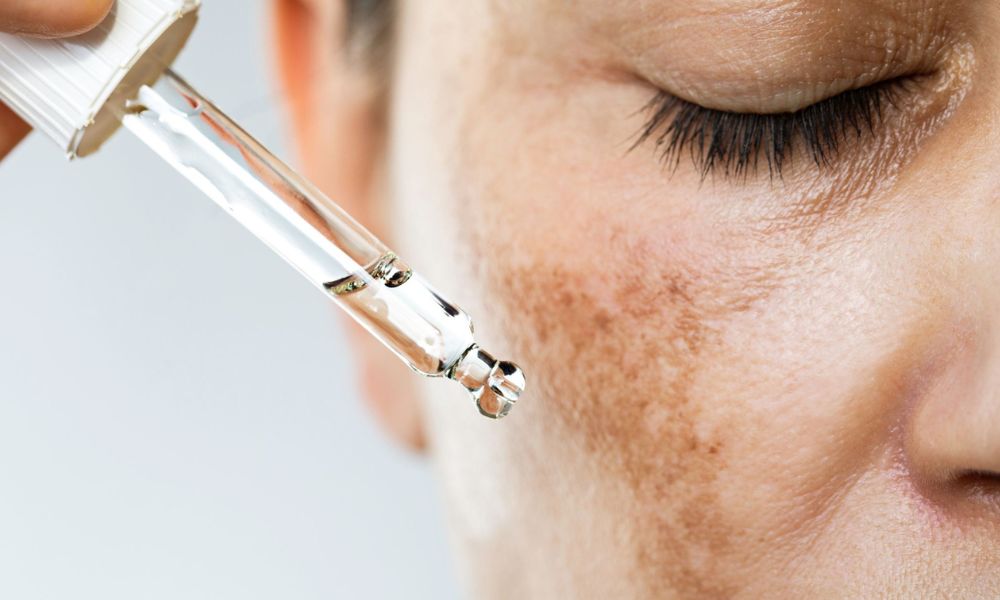Uneven skin tone and hyperpigmentation, characterized by dark patches or spots on specific areas of the body, are common concerns affecting individuals across various skin tones and ages. A comprehensive understanding of this condition is crucial for effective management and treatment. This in-depth guide delves into the intricacies of hyperpigmentation, shedding light on its various manifestations, including sun spots (solar lentigines), melasma, post-inflammatory hyperpigmentation (PIH), and freckles.
By exploring the underlying factors that contribute to hyperpigmentation, such as sun exposure, hormonal fluctuations, skin injuries, inflammation, certain medications, and genetic predispositions, readers can better grasp the root causes of their specific concerns. Moreover, this guide provides valuable insights into identifying the telltale signs of hyperpigmentation, empowering individuals to recognize the condition early and seek professional guidance. Ultimately, this blog aims to equip readers with a thorough understanding of the various treatment options available, including chemical peels, microdermabrasion, and LASER therapies. This enables them to make informed decisions and embark on a personalized journey toward achieving an even, radiant complexion.
What is Hyperpigmentation?
Hyperpigmentation is a common skin condition characterized by darkened patches or spots on the skin due to an overproduction of melanin, the pigment responsible for giving our skin its color. This occurs when melanocyte cells, which produce melanin, become damaged or overactive, leading them to release excess amounts of melanin. As a result, certain areas of the skin appear darker than the surrounding tissue, creating an uneven and blotchy complexion. It’s important to note that hyperpigmentation is a harmless condition that affects melanin production at the epidermis level, the outermost layer of the skin, and is not a disease.
Hyperpigmentation can have a significant impact on an individual’s self-confidence and perception of their appearance, as it manifests in various forms such as age spots, melasma, post-inflammatory marks from acne or other skin injuries, and freckles. This common skin concern affects people of all ages, genders, and ethnic backgrounds, making it a widespread aesthetic issue. Developing a thorough understanding of what hyperpigmentation is and how it develops is crucial for identifying the most appropriate and effective treatment approaches to restore an even, radiant complexion.
Types of Hyperpigmentation
- Sun Spots (Solar Lentigines): Sun Spots (Solar Lentigines): Sun spots, also known as solar lentigines, are flat, brown discolorations that develop on skin areas frequently exposed to the sun’s ultraviolet radiation, such as the face, hands, and arms. These dark spots arise from an increased production of melanin, the pigment responsible for skin color, as melanocytes work to protect the skin from UV damage.
- Melasma: Melasma manifests as irregular patches of tan or brown pigmentation, predominantly appearing on the face, especially the cheeks, forehead, upper lip, and bridge of the nose. Commonly known as the ‘mask of pregnancy,’ it is often triggered by hormonal changes during pregnancy or the use of hormonal contraceptives and therapies.
- Post-Inflammatory Hyperpigmentation (PIH): Post-inflammatory hyperpigmentation is a form of discoloration that occurs as a result of skin injury or trauma, such as acne breakouts, burns, or other wounds. During the healing process, the skin overproduces melanin, leading to the formation of dark spots or discolored areas in the affected regions.
- Freckles: Although not technically classified as hyperpigmentation, freckles are small, flat, brown spots that can become more numerous and darker with increased sun exposure. They are caused by concentrated clusters of melanocytes and may be of interest to individuals seeking information on uneven skin pigmentation.
Causes of Hyperpigmentation:
- Sun exposure: Unprotected exposure to the sun’s harmful ultraviolet (UV) rays is a primary contributor to hyperpigmentation. When melanocyte cells in the skin are subjected to UV radiation, they become overstimulated and produce an excessive amount of melanin. This excess melanin accumulation results in the formation of sun spots, age spots, and other forms of uneven pigmentation on the skin.
- Hormonal Changes: Fluctuations in hormone levels, particularly during pregnancy, contraceptive use, or menopause, can trigger an overproduction of melanin in the body. This hormonal imbalance leads to a condition known as melasma, which manifests as irregular brown or grayish patches on the face, neck, and other areas of the skin.
- Skin Injuries and Inflammation: Any form of trauma, injury, or inflammation to the skin, such as acne scars, burns, or other wounds, can disrupt the normal functioning of melanocyte cells. When these cells are damaged, they release excess melanin, leading to post-inflammatory hyperpigmentation (PIH) in the affected areas of the skin.
- Certain Medications: Some medications, including certain antibiotics, chemotherapeutic drugs, and anti-seizure medications, can increase the skin’s sensitivity to sunlight, a condition known as photosensitivity. This heightened sensitivity can contribute to the development of hyperpigmentation when the skin is exposed to UV radiation.
While less common, some individuals may have a genetic predisposition to developing hyperpigmentation, making them more susceptible to this skin condition. Additionally, certain medical conditions, such as Addison’s disease or hemochromatosis, can affect the body’s melanin production, leading to hyperpigmentation.
Identifying Hyperpigmentation
Properly identifying hyperpigmentation is crucial for achieving an even, radiant complexion. This condition is characterized by dark patches, spots, or discolored areas on the skin that contrast with the surrounding skin tone, creating an uneven and blotchy appearance. To recognize hyperpigmentation, pay close attention to any noticeable darkening or discoloration, particularly on sun-exposed areas such as the face, hands, and arms. Compare the affected areas with the rest of your skin, as hyperpigmentation often results in a significant contrast between pigmented and non-pigmented regions.
Examine your skin in various lighting conditions to better highlight any pigmentation irregularities. If you notice these signs, consult a qualified cosmetic dermatologist for an accurate diagnosis and personalized treatment plan. Professional evaluation is essential for effectively addressing hyperpigmentation concerns, ultimately helping you achieve a more even, radiant, and confident complexion.

Some Treatment Options for Hyperpigmentation
- Chemical Peel Treatments: These involve the application of specific acid solutions to the skin’s surface. These solutions help remove the outermost layers of the epidermis, promoting the growth of new, evenly pigmented-skin cells. When performed by a qualified professional, chemical peels can effectively target and reduce the appearance of hyperpigmentation, providing a more uniform and radiant complexion.
- Microdermabrasion: Microdermabrasion is a non-invasive exfoliation procedure that utilizes a device to gently remove the outer layers of the skin. This device delivers a controlled stream of fine crystals or a diamond-tipped wand, which helps to slough off hyperpigmented cells. Over time, microdermabrasion reveals a brighter and more even complexion by eliminating the pigmented cells and encouraging the growth of new, evenly pigmented skin.
- LASER Treatments: Advanced LASER technologies, such as intense pulsed light (IPL), AFT photofacial and fractional LASERS, offer effective solutions for addressing hyperpigmentation. These LASERS are designed to specifically target and break down excess melanin in the skin, leading to a significant improvement in the appearance of dark spots, patches, and uneven pigmentation. However, LASER treatments require the expertise of a trained dermatologist or aesthetician to ensure safe and effective results. Regardless of the treatment approach chosen, consistent sun protection is crucial for effective hyperpigmentation management. Proper use of broad-spectrum sunscreens and protective clothing can help prevent further sun damage and reduce the risk of hyperpigmentation recurrence. By minimizing exposure to harmful UV radiation, individuals can maintain the results achieved through their chosen treatment and prevent the formation of new hyperpigmented areas.
Conclusion
In conclusion, Hyperpigmentation is a widespread skin issue caused by an overproduction of melanin, leading to patchy skin color and dark spots. It’s important to recognize the different types, like sun spots, melasma, post-inflammatory hyperpigmentation, and freckles, as well as their causes, such as sun damage, hormonal shifts, skin trauma, and certain medications. At Arth Skin & Fitness Center, our team of skincare experts is dedicated to creating customized treatment plans for your unique situation. Whether it’s through chemical peel, microdermabrasion, LASER treatments, or a combination of methods, our goal is to help you achieve a smooth, glowing skin tone and boost your self-esteem. Choose Arth Skin & Fitness for all your hyperpigmentation concerns.


